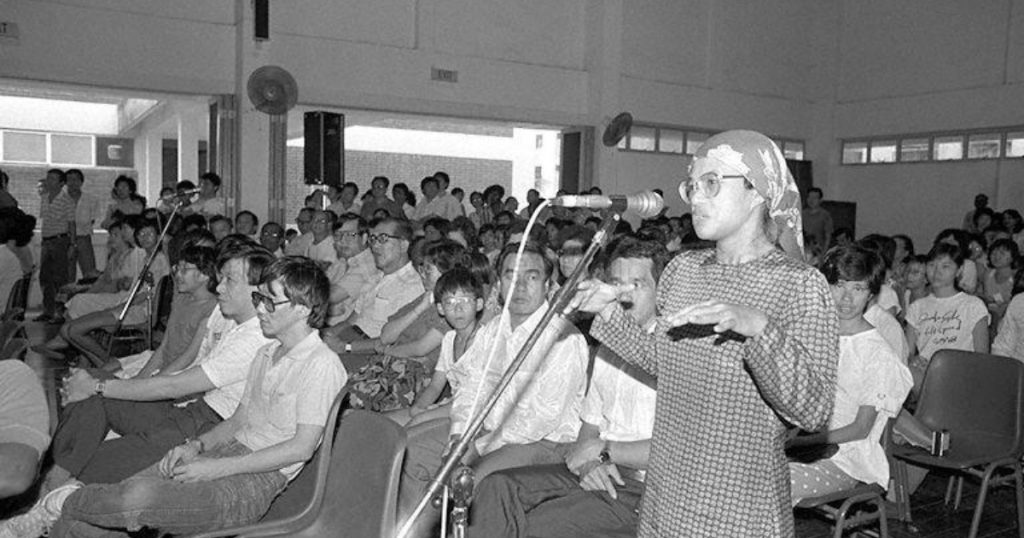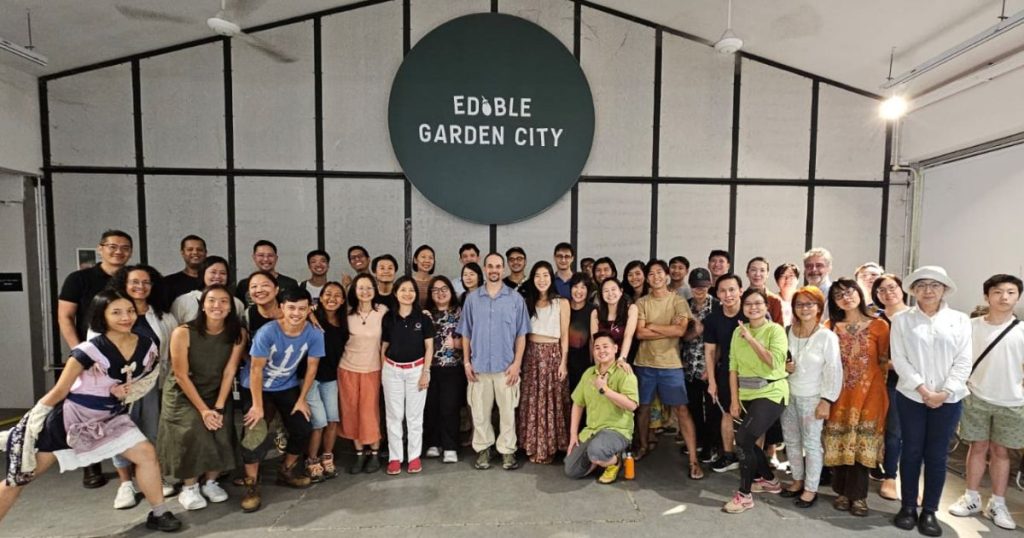May is here. That means mercury rising in our thermometers, us dressing up (or down) for the long equatorial summer ahead, and families headed to the beach … or hiding in one of our many aircon malls.
This is probably also the time that we give thanks for the seven million — and counting — trees which line Singapore’s streets and public parks and which cover about one-third of our island. These trees don’t just give shade — they release water vapour and help breezes pick up, keeping our streets and sidewalks beautiful and cool.
The late Mr Lee Kuan Yew can be thanked for these trees and Singapore’s evolution from a Garden City to City in Nature. He was afterall affectionately known as Singapore’s Chief Gardener.
Mr Lee was particularly fond of the rain tree, the angsana, the acacia for beautifying Singapore. A creeper plant is informally named after him, and he personally planted trees like the mempat across Singapore annually for 51 years.
PAP leaders are holding a tree-planting event celebrating Mr Lee’s green stewardship this coming Sunday morning (May 7).
The rain tree and the angsana: Shade for a shared city
“After independence, I searched for some dramatic way to distinguish ourselves from other third-world countries. I settled for a clean and green Singapore,” wrote Mr Lee in his memoir, From Third World to First: 1965-2000.
This beautified Singapore for foreign investment while uplifting the daily lives of Singaporeans: A shared green environment did its part to bring different communities together and helped make Singapore city an attractive base for investors.
The angsana and the rain tree were among his first choices for this Garden City vision, which was announced on May 11, 1967.

They are massive all over, especially at their crowns. Big, bold and leafy, they quickly provided signs of Singapore city’s greening — as well as much-welcome shade — thanks to Mr Lee’s orders to plant them all along Singapore’s streets and roads.
The acacia: Envisioning the First World
Before Jewel, T3 and even T2, Changi Airport was famous for the acacia trees flowering around it.
Acacia leaves are feathery and delicate, and the acacia variant around the airport are low-growing shrubs. Their flowers are a colourful yellow to golden.
Neat and fast-growing, these trees complemented the leafy rain trees, majestic tembusu and others along the East Coast Parkway linking Changi to the city centre.

All these gave visitors an impressive welcome to Singapore. As Mr Lee noted, they would immediately show that Singaporeans could do more than plant greenery — we could maintain it well as part of our future-focused First World ambitions.
The “Lee Kuan Yew”creeper plant: New angles for urban development
This used to be known chiefly as the vernonia elliptica, but is now also known as the “Lee Kuan Yew”.
We see it nearly everywhere in Singapore today because of Mr Lee’s directives; it dangles down all over walls, greening overhead bridges, flyovers and other public works which otherwise have bare concrete facades.

“If you get the place greened up, if you get all these creepers up, you’ll take away the heat, you’ll have a different city,” said Mr Lee years after they were planted.
This plant was a particularly cost-effective all-angles approach towards developing Singapore during those difficult post-independence days.
The mempat: Singapore’s sakura and a tree-planting campaign for the ages
The mempat tree is as pretty as it is endangered. It flowers with light pink cherry blossoms across its crown and blooms semi-annually each February and August.
Mr Lee planted one at Farrer Circus on June 16 1963, marking the start of Singapore’s greening programme even before independence.

“A blighted urban jungle of concrete destroys the human spirit,” reminisced Mr Lee about the belief which seeded this action.
“We need the greenery of nature to lift up our spirits.”
This coming Sunday morning (May 7), PAP MPs including Deputy Prime Minister Lawrence Wong and Jalan Besar GRC MPs Josephine Teo, Heng Chee How, Denise Phua and Wan Rizal will honour Mr Lee’s green legacy on the hundredth year of his birth. They will plant a hundred trees around St George’s Lane, near the Whampoa River.
This is action for Singapore’s sustainable future.
Just as Mr Lee planted the beginnings of Singapore as a green, liveable city decades ago, DPM Wong and the 4G team are taking the opportunity to make sure that through the uncertain times ahead, our country will always remain in bloom.
Source: National Archives of Singapore, NParks / Facebook





